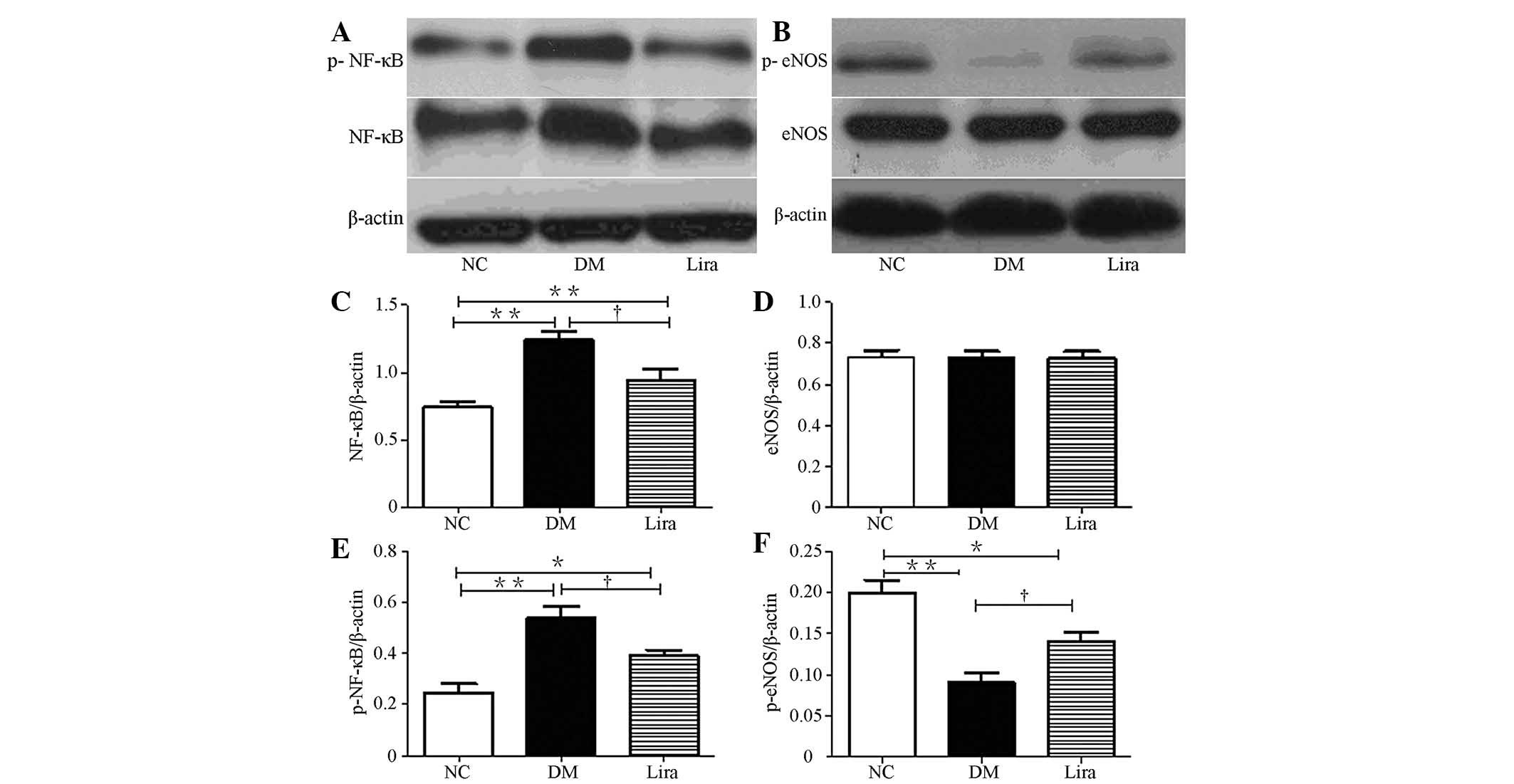Liraglutide ameliorates renal injury in streptozotocin‑induced diabetic rats by activating endothelial nitric oxide synthase activity via the downregulation of the nuclear factor‑κB pathway
- Authors:
- Published online on: September 10, 2014 https://doi.org/10.3892/mmr.2014.2555
- Pages: 2587-2594
Metrics:
Total
Views: 0 (Spandidos Publications: | PMC Statistics:
)
Total PDF Downloads: 0 (Spandidos Publications: | PMC Statistics:
)
Abstract
Accumulating evidence has implicated that liraglutide, one of the human glucagon‑like peptide‑1 (GLP‑1) analogues, elicits protective effects on diabetic nephropathy; however, the mechanism has yet to be fully elucidated. The present study aimed to assess the effect and underlying mechanisms of liraglutide in diabetic nephropathy. Wistar rats with streptozotocin‑induced diabetes mellitus were subcutaneously injected with liraglutide or phosphate buffer for 12 weeks at a dose of 0.3 mg/kg/12 h. The biochemical parameters were determined, renal histological examination was performed by hematoxylin and eosin and periodic acid Schiff base staining, and the mRNA levels of nuclear factor κB (NF‑κB) and endothelial nitric oxide synthase (eNOS) were assessed by quantitative polymerase chain reaction. Furthermore, the protein expression of NF‑κB and eNOS as well as eNOS phosphorylation were examined by western blot analysis and the levels of inflammatory cytokines downstream of NF‑κB were evaluated by fluorescence-assisted cell sorting and finally, the eNOS activity and nitric oxide (NO) production were evaluated by ELISA. Liraglutide decreased the levels of total cholesterol, urine, 24-h urinary albumin, blood urea nitrogen, serum creatinine and histological damage. Liraglutide also reduced the expression of NF‑κB at mRNA and protein levels; the expression of tumor necrosis factor‑α, interferon‑γ, interleukin‑6 and monocyte chemoattractant protein‑1 were also reduced. By contrast, eNOS phosphorylation, eNOS activity and NO production appeared to have increased. Liraglutide may have a direct beneficial effect on diabetic nephropathy by improving eNOS activity by inhibiting the NF‑κB pathway without eliciting a glucose lowering effect.















